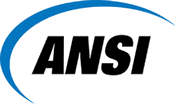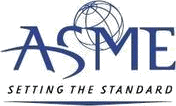ANSI B16 or ASME B16 or both? |


ASME B16.34
Valves Flanged Threaded and Welding Ends
HISTORY - (FOREWORD ASME B16.34-2004)
In December 1969, American National Standards Committee B16 changed its name from Standardization of Pipe Flanges and Fittings to Standardization of Valves, Fittings, and Gaskets, reflecting American National Standards Institute approval of a broadened scope for the B16 Committee. At the same meeting, the committee approved a plan for the organization of a subcommittee to develop a new standard for steel valves with other than flanged ends. Subsequently, B16 Subcommittee 15 was appointed and held its first meeting in December 1970.
Historically, in the development of standards and pressure-temperature ratings for steel valves, the various rating classes for flanges provided an obviously logical basis for valve ratings. Steel valves with flanges of standard dimensions, many also offered in buttwelding-end versions, were given the same pressure-temperature ratings as the flanges. In 1949, a new edition of the standard, then designated B16e 1949, was published, in which a table covering wall thickness requirements for weld end valves had been added. In 1964, the Manufacturer's Standardization Society of the Valve and Fittings Industry developed and published Standard Practice SP 66, covering pressuretemperature ratings of steel buttwelding-end valves. SP 66 introduced a new method for establishing ratings by making ratings a function of the mechanical strength properties of the body material at all temperatures.
Following the publication of SP 66, B16 activated Subcommittee 4 for the purpose of studying the general subject of pressure-temperature ratings and developing rational criteria for such ratings.
In the B16 charge to Subcommittee 15, it was established that the new standard would replace SP 66 and also remove the reference to buttwelding-end valves from B16.5. Flanged-end valves would continue to be covered in B16.5 but on a fully specified basis, rather than as an add-on. As the work of the subcommittee got underway, concurrent actionwas initiated in Subcommittee 3 for revision of B16.5. Subsequent operations of Subcommittees 3 and 15 were closely coordinated to provide assurance that the new standard and the revised B16.5 would be compatible.
A key and basic issue of mutual concern in this coordination was the matter of pressuretemperature ratings. It was necessary to incorporate the SP 66-type ratings in the new standard, but at the same time also to provide ratings equivalent to those in B16.5 covering the buttwelding equivalents of flanged-end valves. Subcommittee 4 had made definitive recommendations for revisions in the flange ratings and it was obviously desirable to rationalize the two types of ratings as they would appear side-by-side in the new standard.
The results of these efforts appear herein in the form of pressure-temperature ratings tables. The method of computing the ratings is detailed in Nonmandatory Appendix B. The ratings differ from the pre-1968 B16.5 ratings because they are now calculated as a function of the mechanical properties of the pressure boundary materials, in contrast to the empirical basis used previously. A change in the SP 66-type rating (herein designated Special Class) discontinues the application of a plasticity factor at elevated temperatures which, in the opinion of the committee, could not be justified in dimension-sensitive valves.
Other innovations include the coverage of forged or fabricated body valves and an increase in detailed coverage by pressure-temperature ratings from 17 materials in B16.5 to 24 material groups in the new standard and in the revised B16.5. Dimensional requirements have been refined and augmented to give the designer more latitude and the user more assurance of adequacy.
A number of the innovations have had trial use and at least some degree of acceptance, as they have been taken from the section on valve requirements developed and published by the ASME Boiler and Pressure Vessel Code to cover valves used in nuclear power plants. A section on valve testing eliminates uncertainties on such points as seat test requirements and stem seal testing. Approval for the 1973 edition of the Standard by the American National Standards Institute was granted in October 1973.
In December 1973, a reorganization of the subcommittee structure for B16 was approved. Subcommittee 15 was redesignated as Subcommittee N and was assigned responsibility for all steel valves. Work began to include coverage for flanged-end valves in ANSI B16.34. The 1977 edition contained flanged-end valve requirements formerly in ANSI B16.5. The rating procedures of B16.5 were adopted and made applicable to Standard Class buttwelding-end valves.
The method of deriving ratings was revised. Major changes were made in the method for determining ratings for austenitic stainless steel valves and ratings for Class 150 valves for all materials. The pressure-temperature tables and materials groups were rearranged and revised using data from the reference Sections of the ASME Boiler and Pressure Vessel Code through the Summer 1975 Addenda.
A number of clarifying and editorial revisions were also made in order to improve the text. It was also resolved that frequent minor changes in pressure-temperature ratings because of revisions to the reference material strength property tables should be avoided and that, as a general guide, such changes should not be considered unless resulting ratings would be changed by an amount in excess of 10%.
Approval for the 1977 edition of the Standard by the American National Standards Institute was granted on June 16, 1977.
During 1979, work began on the 1981 edition. Materials coverage was expanded. Nickel alloys and other alloys were added. Bolting rules were revised to accommodate special alloy bolting for the new materials. Revisions were included to clarify requirements for rotary motion valves, e.g., ball valves and butterfly valves. Wafer-type valves were specifically identified. Other clarifying and editorial revisions were made in order to improve the text.
Following approvals by the Standards Committee and Secretariat, approval for the 1981 edition was granted by the American National Standards Institute on August 14, 1981. During 1985, revisions were proposed that added requirements for socket welding-end and threaded-end valves. The inclusion of requirements for these valves increased the scope of the Standard. Also, the listings for nickel alloy and other alloy valves materials were expanded. Rules for threaded body joints were added, and wafer-type valve body rules improved. Following approvals by the Standards Committee and ASME, approval for the 1988 edition was granted by the American National Standards Institute on February 24, 1988.
During 1993 and carrying over into 1994, revisions offered included multiple material marking and an improved interpolation procedure. New materials were added and the pressure-temperature rating tables were recalculated in accordance with Nonmandatory Appendix B using the latest data available from the reference ASME Boiler and Pressure Vessel Code Reference(s). An appendix was added covering nonmandatory requirements for a quality system program. Following the approvals the Standards Committee and ASME, approval for the new edition was granted by the American National Standards Institute on October 3, 1996.
Work was started during 1999 to revise the standard to include metric units as the primary reference units while maintaining U.S. customary units in either parenthetical or separate forms. The goal is to delete the U.S. customary units when the standard is next issued.
All pressuretemperature ratings have been recalculated using data from the latest edition of the ASME Boiler and Pressure Vessel Code, Section II, Part D. As a result, some materials have been shifted to other material groups and some changes have been made to some valve ratings within material groups. Because of diminished interest for flanged end valves conforming to ASME Class 400, they are not specifically listed in this revision. Flanges for Class 400 will continue to be listed in B16 flange standards. Provision has been made to allow Class 400 valves to be furnished as intermediate rated valves. Numerous requirement clarifications and editorial revisions have also been made.
Following the approvals of the Standards Committee and ASME, approval for the new edition was granted by the American National Standards Institute on February 20, 2004.
